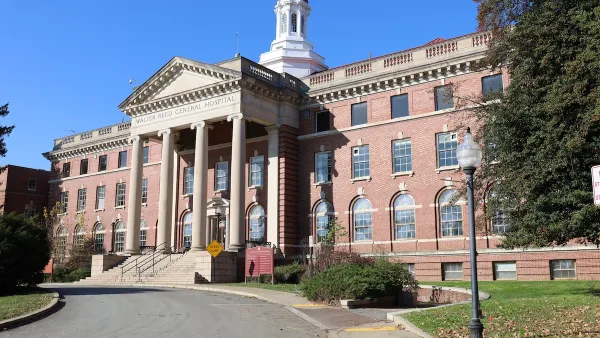An op-ed describes the choice by many cities to prioritize residential projects in old industrial spaces as short-sighted and potentially unjust.

Andy Cook writes an op-ed for Next City that makes an impassioned plea in support of the industrial land uses that are giving way to luxury residential developments in cities like Baltimore and many others around the United States. "If Baltimore and cities like it want to build a future that offers opportunities for everyone," writes Cook, "we need to hold the line on light industrial zoning, and think hard about ways we can rebuild our base of working class jobs, and ultimately, the pathways they offer back into the middle class."
Cook offers the example of Union Craft Brewing—a home-grown Baltimore success story looking for a new location for expansion. The problem: the city of Baltimore has been prioritizing residential housing over industrial space during the current urban boom. Cook provides context:
Between 2005 and 2015, Baltimore down-zoned over 400 acres of industrial land to residential or commercial categories. During that same time, it added only 67 acres of new industrial zoning, all at the former site of the Hollander Ridge public housing project, demolished in 2000.
Noting that "once a city gives up an industrial area, it never comes back," Cook builds the case that Baltimore's focus on residential adaptive reuse projects only benefits an "upwardly mobile generation of suburbanites seeking a more urban lifestyle." Meanwhile much of Baltimore's population is mired in unemployment and underemployment.
FULL STORY: Manufacturing Isn’t Dead; Stop Zoning Like It Is

National Parks Layoffs Will Cause Communities to Lose Billions
Thousands of essential park workers were laid off this week, just before the busy spring break season.

Retro-silient?: America’s First “Eco-burb,” The Woodlands Turns 50
A master-planned community north of Houston offers lessons on green infrastructure and resilient design, but falls short of its founder’s lofty affordability and walkability goals.

Delivering for America Plan Will Downgrade Mail Service in at Least 49.5 Percent of Zip Codes
Republican and Democrat lawmakers criticize the plan for its disproportionate negative impact on rural communities.

Test News Post 1
This is a summary

Test News Headline 46
Test for the image on the front page.

Balancing Bombs and Butterflies: How the National Guard Protects a Rare Species
The National Guard at Fort Indiantown Gap uses GIS technology and land management strategies to balance military training with conservation efforts, ensuring the survival of the rare eastern regal fritillary butterfly.
Urban Design for Planners 1: Software Tools
This six-course series explores essential urban design concepts using open source software and equips planners with the tools they need to participate fully in the urban design process.
Planning for Universal Design
Learn the tools for implementing Universal Design in planning regulations.
EMC Planning Group, Inc.
Planetizen
Planetizen
Mpact (formerly Rail~Volution)
Great Falls Development Authority, Inc.
HUDs Office of Policy Development and Research
NYU Wagner Graduate School of Public Service




























